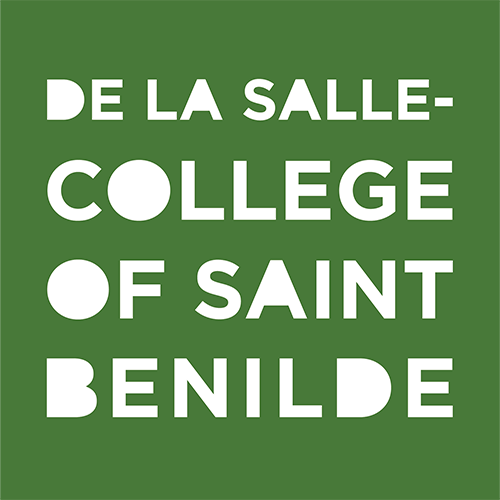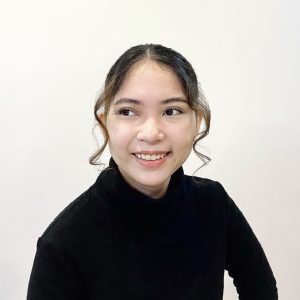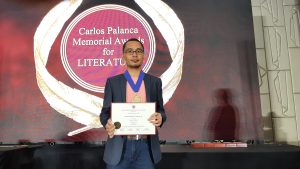Benilde Hosts Canadians for Exchange Workshops on Photography and New Media
Benilde Hosts Canadians for Exchange Workshops on Photography and New Media
21 June 2024
The art world is often viewed as a sphere where boundaries dissolve, fostering a unique blend of ideas, cultures, and perspectives. Recognizing this, De La Salle-College of Saint Benilde (Benilde) in Manila, Philippines, and Ontario College of Art and Design University (OCAD U) in Toronto, Canada, have signed a Memorandum of Understanding (MOU) aimed at promoting academic exchange and fostering intercultural understanding between the two institutions. This collaboration, which began before the pandemic and continues to thrive, underscores the value of international cooperation in the arts and education.
Both institutions acknowledge the mutual benefits of a close relationship and its enhanced educational opportunities for their students. This collaboration promotes dialogue and cooperative efforts and provides unique learning experiences, exposure to diverse cultures, and the chance to learn from different teaching methodologies. The two universities aim to develop programs that benefit their academic communities, including students, faculty, and staff, by fostering a deeper understanding of the global art community and enhancing their professional and personal growth.

Cultural Exchange and Educational Collaboration
The seeds of the Benilde-OCAD U partnership were sown during an earlier visit by an OCAD U administrator to various schools in the Philippines, including Benilde. The initial focus was on exploring collaborations in animation programs. However, during a tour led by Maria Sharon Mapa Arriola, Dean of Benilde’s School of New Media Arts (SNMA), the AB Photography program caught the attention of the OCAD U delegation. This discovery sparked the idea of extending the collaboration to include photography, a field in which both institutions excel.
“During the pandemic, the goal was to do just one immersion project online,” explains Mr. Francis Fausto S. Tady, Chairperson of Benilde’s Photography Program, due to the 12-hour time difference between the two countries. This arrangement made synchronous online activities difficult, pushing both institutions to consider face-to-face interactions. However, with the support of the OCAD U team, who secured a grant from their government to fund the exchange program, the collaboration transitioned from online engagements to a full-fledged exchange program. This financial support was crucial in overcoming the challenges posed by the pandemic and ensuring the continuity of the collaboration.
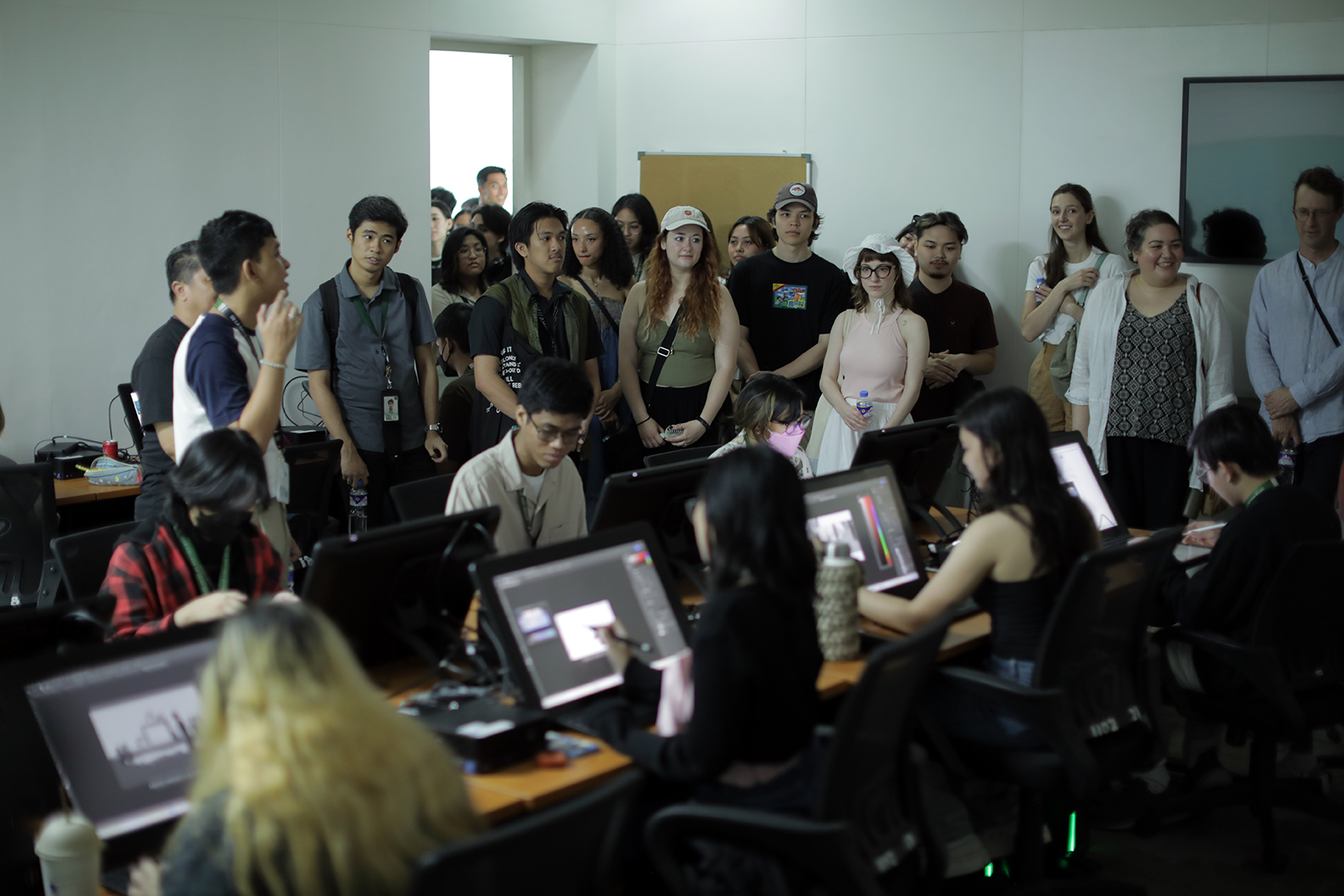
Last May 11-24, a delegation of 11 students headed by Ms. Handleigh from OCAD U visited Benilde, marking a significant milestone in the partnership. The visiting Canadian students were immersed in a variety of workshops and classes, from meeting their student counterparts for the OCAD U, Experiential Photography (workshop that ran throughout the 2-week-long visit), pinhole activity, darkroom processing, creative thinking, slow photography/anthotype, VR and animation, hand coloring to open studio sessions led by Benilde’s Photography faculty alongside Ms. Handleigh. They were also encouraged to engage with the broader local student life. The outcome of this exchange was a series of collaborative artworks that reflected the students’ diverse perspectives and shared experiences from both institutions.
“They were here during the opening of Benilde Open… they were able to see the best of Benilde, but they were also able to see the other grantees who were coming from other disciplines,” highlighted by Mr. Tady. “This exposure was instrumental in providing a comprehensive understanding of the diverse and interdisciplinary nature of education at Benilde. And they had access to the MCAD, and we realized they did not need to leave the campus to experience Philippine art across disciplines.”
Ms. Handleigh, who has a personal connection to the Philippines through her heritage, embarked on this journey with high expectations, which were pleasantly exceeded upon arrival. She recounts her initial impressions of Benilde’s campus, highlighting the warm reception and the university’s impressive facilities: “The dark rooms they showed us were packed with all the equipment and green rooms. It was stunning.”

The workshops conducted by Handleigh focused on sustainable photography processes, which is a passion area for her. Participants created their own emulsions from local fruits and vegetables, harnessing the intense Philippine sunlight to produce unique photographic prints. Handleigh was particularly struck by the diversity of flora students brought in, noting special moments when Filipino students shared their knowledge, “Somebody brought ube, which was wonderful. The color palette is just so vibrant, which is lovely.”
The collaborative nature of the workshops was a cornerstone of the exchange. Handleigh emphasized the significance of pairing OCAD and Benilde students one-to-one, which fostered deep bonds and mutual learning, transcending cultural boundaries. The students learned new techniques and approaches to their craft and better understood each other’s cultures and perspectives. This personal growth and learning were the true outcomes of the exchange, demonstrating the transformative power of international academic and cultural collaborations. The students’ artistic development and learning were evident in the unique collaborative artworks they produced, which reflected a blend of their diverse perspectives and shared experiences.

Discussing the differences between educational systems, Ms. Handleigh noted Benilde’s strong sense of community and cohesion, “Benilde is very good at fostering that sense of community, which was really nice when they welcomed in the OCAD students.”
One of the core philosophies of the partnership is mutual learning and shared growth. While Benilde students gained from the rigorous studio critique culture at OCAD U, the Canadian students appreciated the advanced technological facilities available at Benilde. This exchange of practices and methodologies has enriched students’ educational experiences from both institutions and fostered a sense of unity and shared purpose in the collaboration, making everyone involved feel included and valued.
Challenges and Innovations
The exchange has also been instrumental in fostering a culture of critique and feedback among students. At OCAD U, students are well-versed in studio critiques, an area Benilde aims to develop further. “We want to create a space where students feel comfortable and empowered to critique their classmates’ work,” says Mr. Tady. This cultural exchange has enhanced the student’s technical skills and ability to engage in constructive criticism, a vital aspect of artistic growth.
One of the key highlights of the partnership is the focus on understanding and appreciating each other’s artistic practices. “Whenever we partner with other institutions, our goal is not technology transfer,” Mr. Tady clarifies. “We are very well-equipped with the latest technology in photography. Instead, we look at how other institutions teach and practice photography.” This approach has allowed Benilde to incorporate best practices from OCAD U and vice versa, enriching both programs.
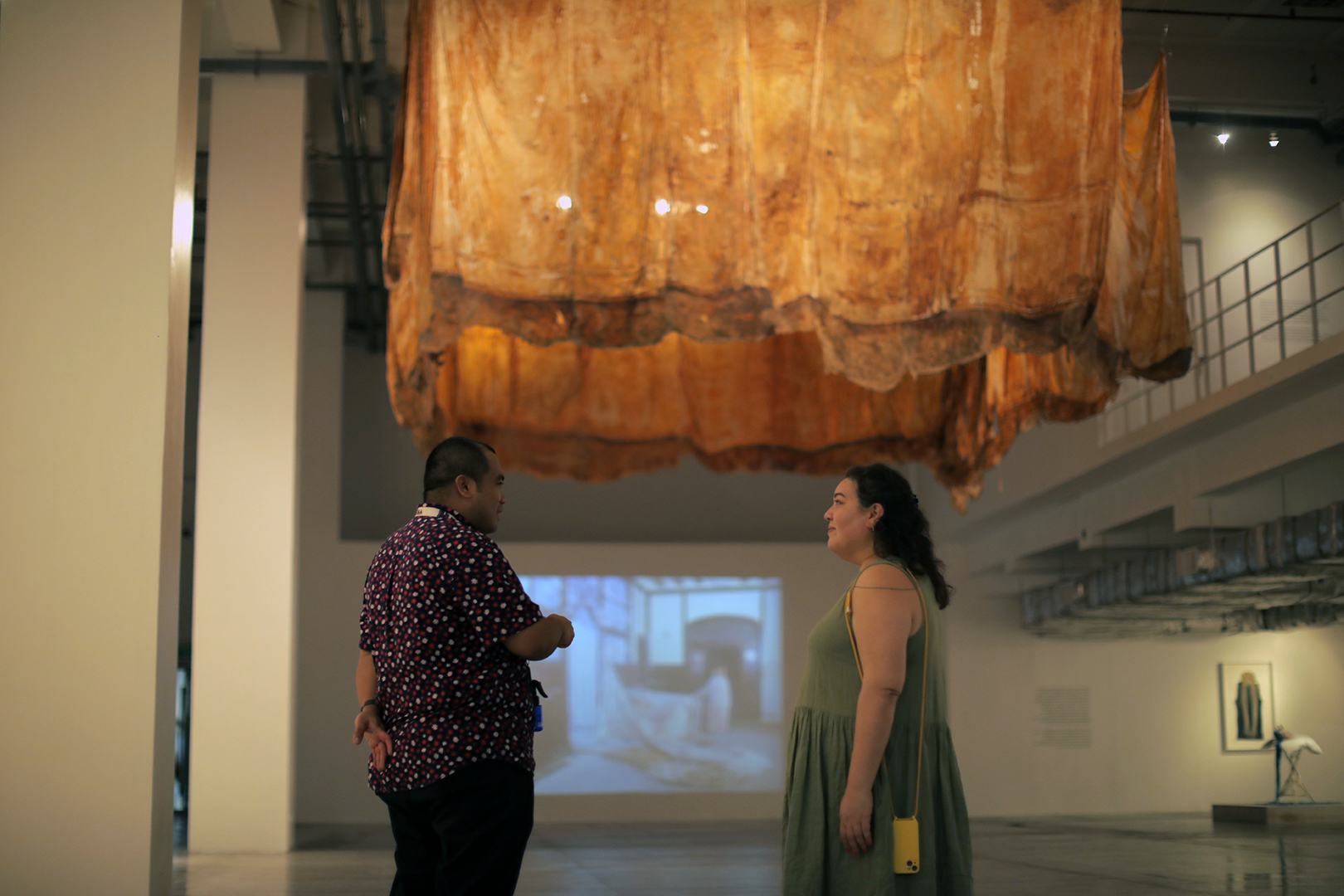
“I think the goal why we have the Capstone Project was not just to look at the technical execution but rather for them to create one work. As we said, Benilde and OCAD U students are in workshops where they talk and collaborate,” Mr. Tady notes. “And part of your growth (as an artist) is how can you explain your work, defend it, justify it but also accept that you need to give way to the needs and what your partner wants to do. Our students were able to experience having that partner and having a dialogue in the entire two weeks and producing a work that is a collaborative process.”
Benilde’s Photography Program faculty member Jay Javier feels the same way. “It’s like a fellowship,” he reflects, emphasizing the significance of the cultural exchange. The workshop was more than just a technical exploration of photography; it was a profound meeting of minds and cultures. “Our students had to work within the same pace and framework,” he said, noting the adaptation required by both Benilde and OCAD U students to each other’s working styles and cultural nuances.

The workshop offered a hands-on approach, allowing students to dive deep into traditional and alternative photographic methods. “Specifically, alternative or traditional photography methods,” Mr. Javier explains, “we did pinhole, film development, and some even shot films.” The excitement among students was tangible, especially those experiencing darkroom processes for the first time. This tactile engagement, where “their hands were wet,” provided a visceral connection to the medium of photography, something often lost in the digital age.
One of the most striking aspects of the workshop was the resourcefulness demonstrated by the Filipino students, which left a lasting impression on the OCAD U participants. Mr. Javier highlighted the ingenuity born out of necessity, a trait common in Filipino culture. “I also introduced them to using alternative materials like X-ray film. They load it on the camera, and they shoot with that. Another student ran out of a chemical. I said, ‘I will show you how Filipinos develop film.’ So, we substituted some of the chemicals with what we have here. Then, the negative came out fine,” illustrating how the lack of resources can spur creative solutions.

These practicality and inventiveness lessons were crucial for the OCAD U students, many of whom came from more resource-abundant environments. “During the exhibition, some OCAD U students were also looking at…’ Okay, it’s not just whether I want to do it, but can I financially support it or have the funds? Is it easy to do this project with the available funds?’ So, part of their equation (now) was whether or not the project was economically viable,” Mr. Tady adds. “In Canada, everything is provided for them. Or all of the materials that they need are easy to source there. Here, they saw that some of our students would have to look for suppliers for different materials. So, there are limitations to their art and what they do. For them to see that, sometimes you also have to look at the availability of resources and adapt quickly.
Exploring Connections through Art
“Illuminadong Paglaho,” a collaborative art capstone project by Atena Vaezian (OCAD U) and Matthew Mangulabnan (Benilde), melds traditional Filipino craftsmanship with contemporary artistic techniques. Utilizing gouache, ink wash, engraving, and digital negatives on a Capiz window, the piece exemplifies the creative synergy between Benilde and OCAD U.
“Not everyone, everywhere, has the same resources as Capiz. This is only available here,” explains Atena “V” Vaezian. The Capiz window, a traditional Filipino element, serves as both a canvas and a cultural artifact, contextualizing the artwork within its Philippine origins. The piece will be exhibited in Benilde and OCAD U, emphasizing cross-cultural collaboration. “The Capiz window contextualizes our artwork… showcasing that this artwork of ours has been created here in the Philippines,” says V
The conceptual phase began with personal connections to objects. V and Matthew shared items they brought with them, sparking a discussion about their significance. This brainstorming led to focusing on body parts, specifically eyes, and light, as metaphors for personal and artistic vision. “We ended up focusing on body parts like the fingerprints… our eyes, our hands, these are personal things,” notes Matthew.
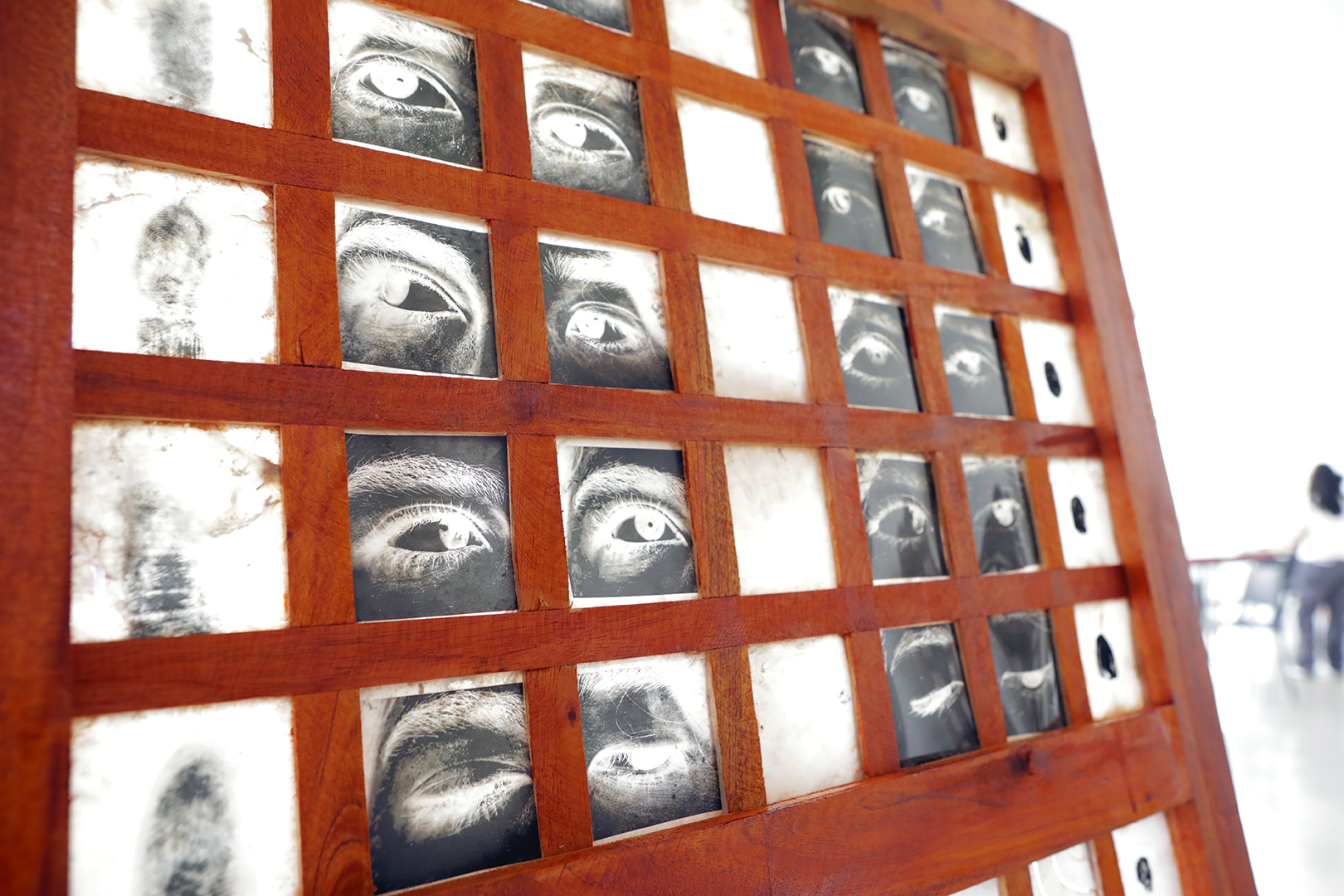
The artists combined traditional and digital techniques, each contributing their unique skills. V worked with traditional negatives, experimenting with Capiz’s transparency, while Matthew created digital negatives on acetate films. This blend of old and new methods highlights the project’s innovative spirit. “I did digital negatives. I did traditional negatives…directing light, controlling where it hits the sensitive material,” describes V.
Matthew’s use of digital negatives on acetate, designed to fade over time, metaphorically represents the fleeting nature of the artists’ collaboration and the impermanence of their shared experiences. This temporal aspect adds a poignant layer to the artwork. “Those acetate films would soon fade as our relationship together would fade as well… it would mean nothing to other people, but it would mean something to us,” reflects Matthew.

5x7 Photo Prints, Painted With Food Coloring
In a unique collaboration between two artists and institutions, Juliana Garcia (OCAD U) and Richard De Mesa (Benilde) have created a thought-provoking art piece titled “Bridging Realities.” This artwork, part of the “Disconnect to Connect” theme of the capstone activity, vividly explores cultural connection and personal perception.
“We started with the theme ‘connect, disconnect.’ We tried to think of what connects us. For us, that was the Philippines,” explains Juliana.
Juliana, born in the Philippines but raised in Canada, and Richard, who spent his entire life in the Philippines, found common ground in their shared heritage. However, their experiences and perceptions of their homeland vastly differ. This contrast became the cornerstone of their collaborative project.
“I’ve always felt like a visitor here, whereas Richard is a resident. We decided to show that different perspective of Manila through hand coloring black and white photographs,” Juliana continues.
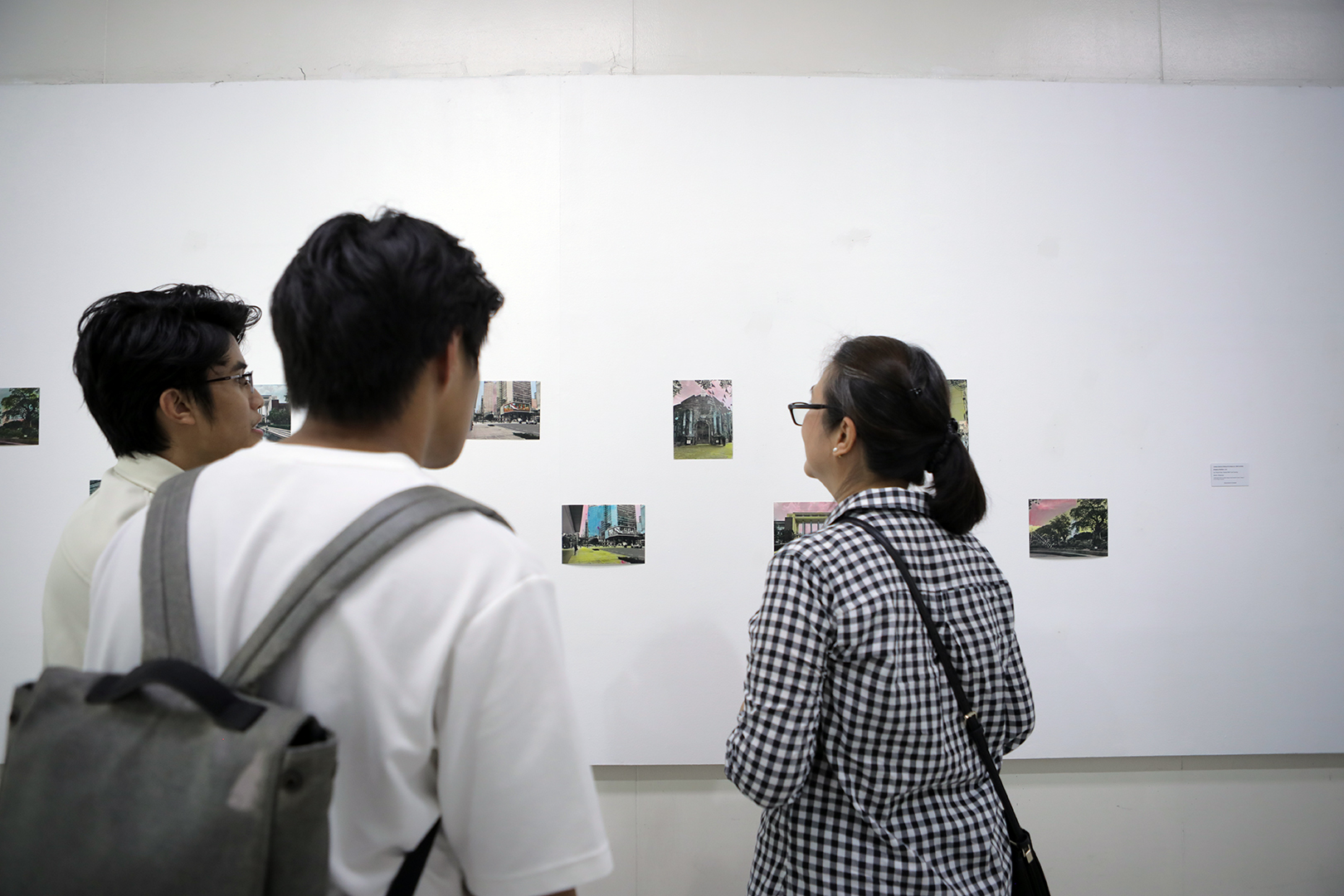
The artists printed ten black and white photographs of Manila, five variations each. They then independently hand-colored these prints using food coloring, allowing their interpretations to shine through. This method highlighted their unique perspectives and showcased their connections to the city.
“Through black and white photographs and hand coloring, you’re able to depict your reality of what you perceive of Metro Manila,” she notes.
The results were strikingly different. Juliana’s photos depicted a more realistic, vibrant view of Manila, while Richard’s appeared almost fantastical, filled with bright, bold colors. “In his, the way he described it was that mine is like expectation, and his is the reality of the Philippines,” Juliana remarks, emphasizing the contrasting views.
This collaboration was not just about creating art; it was also a cultural exchange. Juliana reflects on the experience of working with someone from a different background within the same cultural context. “It wasn’t difficult, but it was new to me because I’ve never talked to any other Filipino born and raised here… To be able to get to know someone, a stranger to me, was fun. You learn a lot about yourself and about other people,” she shares.

For Juliana, this project was also a personal journey. “Besides the heat, Metro Manila is a great place to explore and learn about. I have never traveled alone before. And being able to do that in the place I was born is fun and life-changing, almost,” she reflects.
Participating in various workshops as part of this project further enriched her experience. “I really liked the pinhole camera… I also liked the hand-coloring workshop with Sir Jay. That’s like the inspiration for mine and Richard’s project,” she notes.
Using natural elements in the plant-based developers’ workshop was another highlight for her. “Being able to go out and get plants or vegetables or fruits. And then see it become artwork. That’s so new to me, and I think it will change how I go about my projects in the future,” she says.
“Collaboration with other artists is important in any creative practice. And to do that in a different country with kids with different perspectives than yours…it’s exciting,” Juliana concludes, capturing the essence of their joint artistic experience and speaking on behalf of Richard, who was in class at the time of the interview.
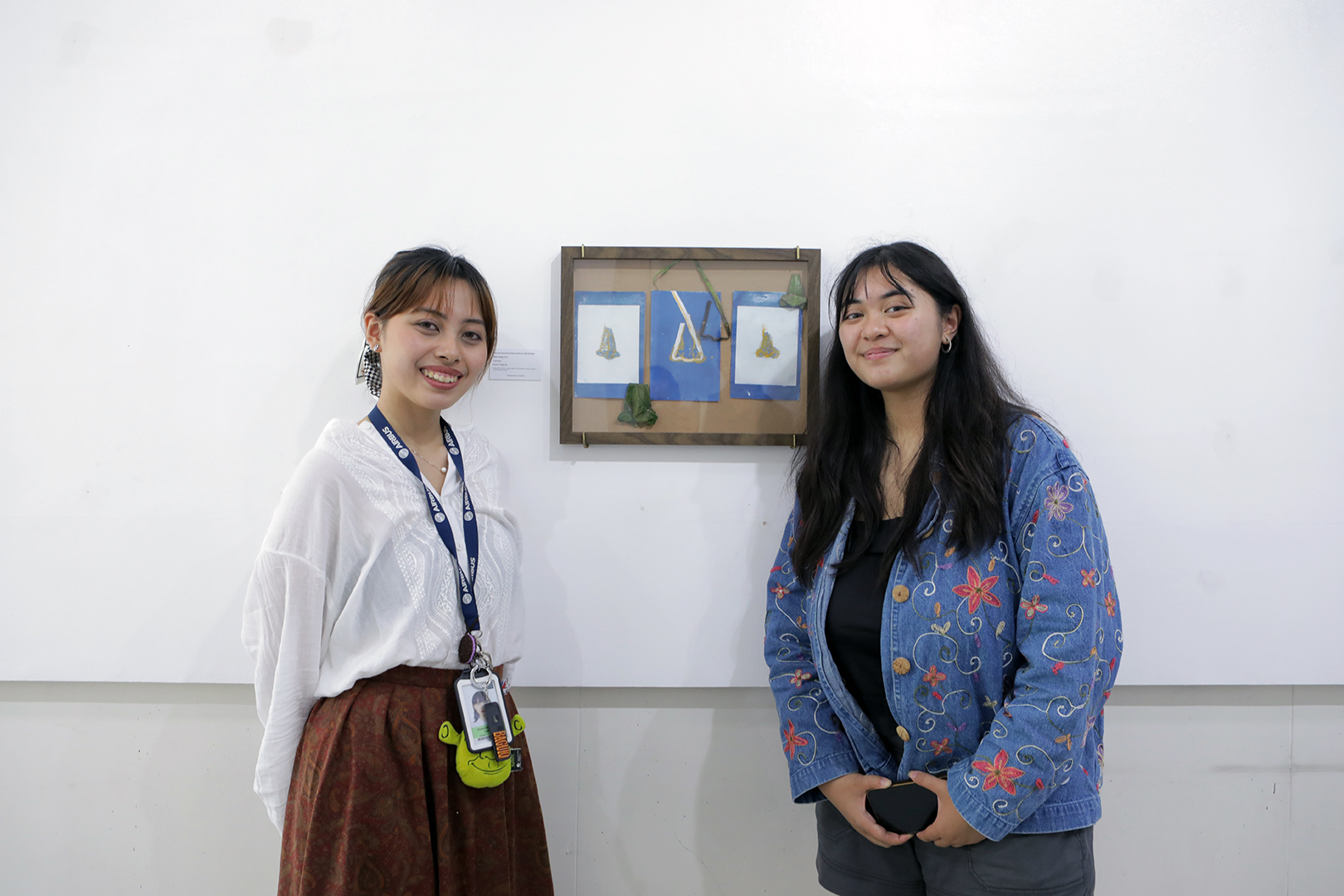
Artists Francine Garcia (Benilde) and Clarissa Cadiz (OCAD U) have created a compelling cyanotype piece titled “Dahon Ilong,” which beautifully merges heritage and artistic technique. Their work delves deep into exploring and celebrating Filipino identity, mainly through the lens of physical features often deemed not ideal in a Western context.
Clarissa’s initial inspiration stemmed from her visit to the National Museum of the Philippines, where she observed art depicting Filipinos with flat noses—an often-stigmatized feature in Filipino culture. Reflecting on her childhood, where attempts to “correct” her flat nose were commonplace, Clarissa realized the profound impact of these societal pressures. She explained, “In Canada, or just in the Western part of the world, if Asian features are depicted, they are usually East Asian. Filipino faces are rarely seen.” This realization fueled her desire to celebrate Filipino features, using her art to reclaim and honor the “pango (flat) nose” as a symbol of her heritage.
Francine echoed these sentiments, adding that in her family, her different physical features were a point of pride and curiosity. The notion of a “matangos (long and pointy) nose” highlighted how beauty standards varied within Filipino communities. Francine emphasized the importance of self-acceptance and cultural pride, stating, “We should not be ashamed of how we look.”
The medium chosen for “Dahon Ilong” was cyanotype, a photographic printing process that uses chemicals to create images in a distinctive blue hue. The artists used watercolor paper as their canvas, spreading the chemicals and exposing the treated paper to sunlight to develop the images. The leaves collected by Clarissa were arranged to form the shapes of noses, which were then accentuated with gold paint inspired by the Japanese art of kintsugi.
Francine elaborated on the technical process, highlighting the use of cyanotype and the symbolic addition of gold paint. “The gold paint represents kintsugi, mending broken objects together,” she explained. This practice reinforced the theme of embracing and celebrating one’s heritage and identity, imperfections included.

Both artists reflected on their broader experiences as Filipino women and how these influenced their art. Clarissa noted the educational aspect of their workshops, particularly a presentation by Sir Jay on coloring black and white photos with watercolors. This exposure to historical Filipino media from the 1950s and 1960s, including glamorous posters of Filipino celebrities, was eye-opening for her. “I never thought of Filipinos being that immersed in media,” she remarked, appreciating the newfound understanding of her cultural history.
Francine, reflecting on the face-to-face nature of their collaboration, noted the positive impact of working closely with Clarissa. She valued the focus and creativity that Clarissa brought to the project, which complemented her artistic vision. “It’s helped me consider other people’s insights. What can they bring, and what can I bring?” she mused, appreciating the collaborative process that led to a mutually satisfying final piece.

Looking Forward
The success of this exchange has laid a solid foundation for future collaborations. Both institutions are eager to continue and expand this partnership. “Sir Francis (Tady) and I discussed more exchanges, hoping to send our students to OCAD U in the future,” Mr. Javier shares.

The positive experiences and the profound impact on students’ learning underscore the value of such international partnerships. The blend of hands-on experience, cultural exchange, and innovative practices prepares students for the evolving landscape of new media and photography. OCAD U and Benilde have created a vibrant learning environment that transcends geographical boundaries by combining resources, knowledge, and creativity.
Mr. Tady says, “This isn’t just about photography; it includes animation and web design. We’re also considering faculty exchanges and artist-in-residence programs. This partnership is more than just an exchange of skills; it’s an exchange of cultures, ideas, and a shared passion for the arts.”
For more information on Benilde’s undergraduate programs, contact us at (63) 2 8230 5100 local 1801 or admissions@benilde.edu.ph. You may also visit our website at www.benilde.edu.ph.
